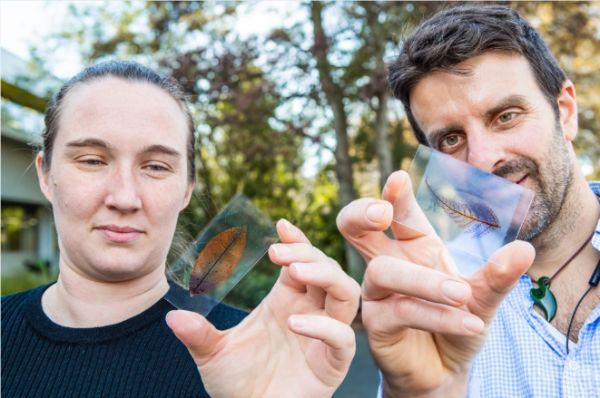Science On Display: 'Art-on-a-Chip'

Studying how tiny amounts of liquid move through precisely engineered soft plastic chips is an exciting new field for scientists, particularly when applied to molecular and cell biology. In a science-meets-art twist, University of Canterbury researchers are now also unlocking the aesthetic potential of microfluidics, turning petite research aides into micro masterpieces.
University of Canterbury postdoctoral researcher Dr Rebecca Soffe compares the process of making microfluidic chips to baking, though in her case ‘the kitchen’ is UC’s state-of-the-art Nanotechnology Laboratory, the most complete fabrication facility of its kind in New Zealand.
Chips baked in this kitchen are next level, in terms of their research applications. “Currently I’m working on an insulin biosensor which uses microfluidics, and the development of a leaf-on-a-chip to investigate how leaves distribute nutrients to their surfaces,” she says.
“The same technology is being by applied by other members in the research group to study fungal plant pathogens and the effect of forces on cancer cells, for example.”
At first glance, it can be hard to grasp the inherent complexity of these design engineered chips that look like plain plastic rectangles or discs. Associate Professor Volker Nock, who is leading UC’s research in the Department of Electrical and Computer Engineering on the application of microfluidics to Lab-on-a-Chip devices, first started playing with colour in chips several years ago. He wanted to help inspire new students and also potentially create something tangible and beautiful that could be used for display purposes.
“I started using food dye colours that could flow through tiny channels in the chips to reveal a design, such as the University of Canterbury logo,” he says. “Students who have never seen the chips before find it quite fascinating, because they are usually expecting something electrical not a fluid-based technology.”
The only problem is that food dye tends to fade quickly so dyed chips were only able to be displayed for a short time before losing their vibrancy. He then came across a US-based researcher, Dr J. Tanner Nevill, who had devised a way to create long lasting results with epoxy glue-based colours.
Combining their expertise, the two formed a research collaboration looking at how to best preserve microfluidic chips for visualisation and permanent display. Rebecca was among the researchers on their international team, whose scientific paper discussing ‘Art-on-a-Chip’ was recently published in leading nanotechnology journal Small.
The results are stunning little display pieces that include a depiction of the Golden Gate Bridge and complex leaf structure portraits (‘nervatures) of ivy, silver fern and māhoe, captured and coloured in perfect detail.
As Rebecca observes, it shows that science can also be colourful and creative. Last words should go to Albert Einstein, as quoted in the Art-on-a-Chip paper: ‘The greatest scientists are always artists as well.’


 NIWA: Underwater Canyon Seafloor Study Reveals Landslide And Tsunami Risk
NIWA: Underwater Canyon Seafloor Study Reveals Landslide And Tsunami Risk Women in Horticulture: Gender Gap In NZ Horticulture Leadership - Call For Action Ahead Of International Women’s Day
Women in Horticulture: Gender Gap In NZ Horticulture Leadership - Call For Action Ahead Of International Women’s Day Buy NZ Made: Financial Hardship At Its Highest Level Since 2020
Buy NZ Made: Financial Hardship At Its Highest Level Since 2020 Reserve Bank: Strengthening Trust And Confidence In New Zealand’s Insurance Industry
Reserve Bank: Strengthening Trust And Confidence In New Zealand’s Insurance Industry Kiwi Economics: Trumpian Tariffs And Tough Talk Generate Geopolitical Jitters
Kiwi Economics: Trumpian Tariffs And Tough Talk Generate Geopolitical Jitters University of Auckland: How To Make Technology More Accessible For Older People
University of Auckland: How To Make Technology More Accessible For Older People



